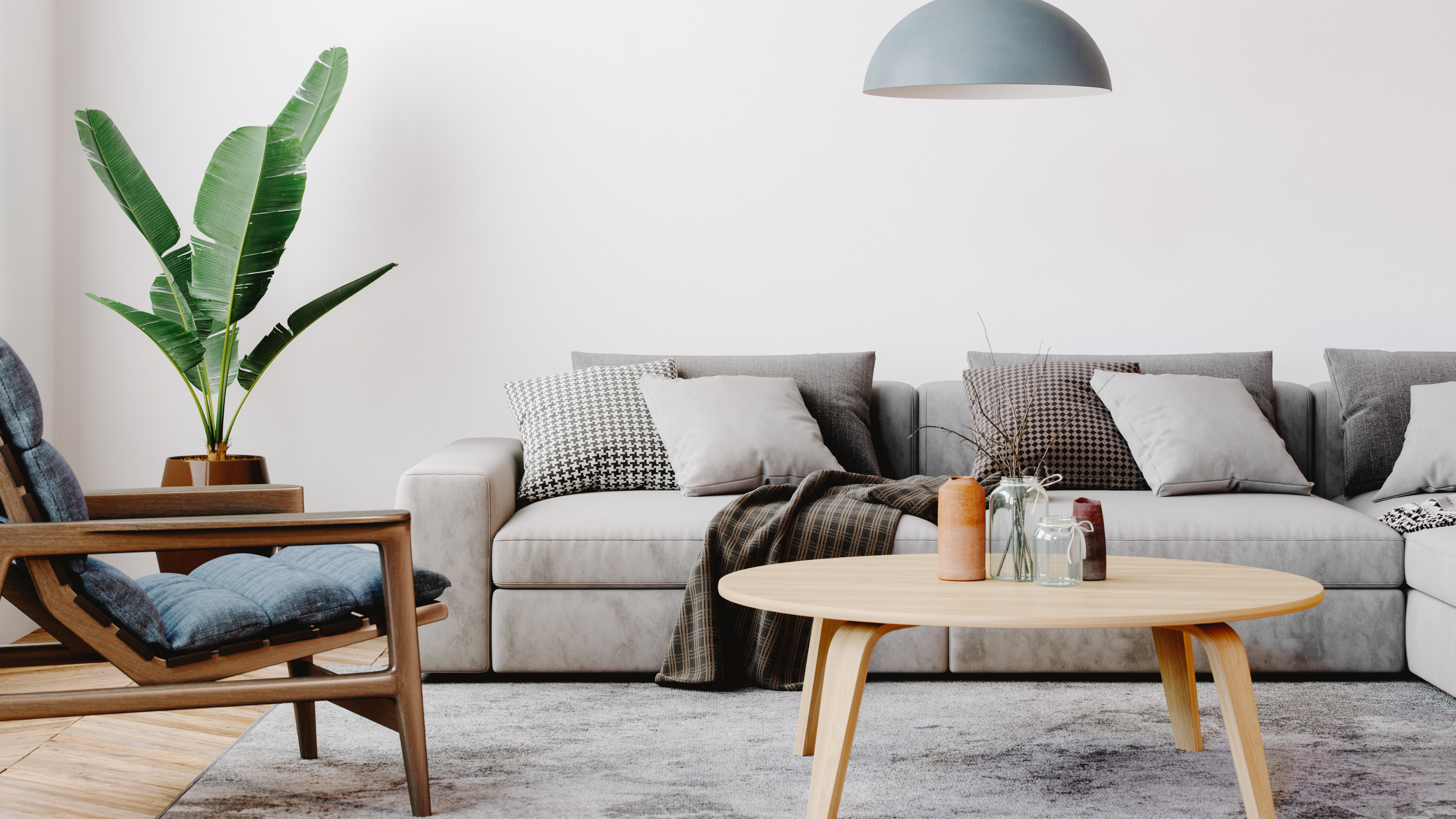

Despite what you might think, you don’t need to paint over your home’s gray walls in order to fulfill your design and decor dreams.
In a similar way to decorating a room with white walls, creating your own space among gray walls means embracing the blank slate opportunity to inject some of your own personality.
While naysayers might focus on how gray walls can be cold or dull, these decorating tips prove that with a bit of out-of-the-box thinking, gray walls can be anything but boring.
Understand Your Personal Style
It might be tempting to embrace the gray walls and go completely neutral, or embrace the opposite reaction and go full-on rainbow, but before you get started, it’s important to take stock of your own personal style.
Whether your style borders on neutral minimalism or all-out colorful maximalism, gray walls can be a helpful backdrop for creating the home you imagine for yourself. Although there are plenty of ways you can inject color and personality into your decor, it’s important to establish a base understanding of your own personal style before digging in.
The best way to establish your own personal design preferences is by collecting images that speak to you. Spending time on Pinterest boards, reading design articles, or flipping through magazines can inspire you to see how others decorate and learn to discern what you appreciate.
Depending on your personal style, whether you are a natural-tone minimalist or a moody maximalist, with a little imagination, your gray walls can help you achieve the design of your dreams.
Embrace The Monochrome
One way to decorate with gray walls is by embracing the style that’s already established. If you love your gray walls, you might want to go further by incorporating gray tones throughout.
From furniture upholstery to painted tables to the colors of curtains, creating a monochrome look can make your space feel sleek and minimalist.
Experiment With Color
If monochrome just isn’t your style, experimenting with colors can allow you to embrace the best tones for your space. Depending on the undertones or shade of gray used on your walls, some color tones can be more complimentary than others.
The only surefire way to discover the best color tones that balance out your gray walls is to incorporate physical items, including furnishings and accessories, in your home. You can do this by purchasing a color wheel or keeping the receipt on out-there colorful items to see which best live in your home.
That can also mean allowing the piece to live in your home for at least 24 hours, seeing it in various natural lighting, and understanding if it will work with your gray walls existing furniture.
Try A Natural Color Palette
Incorporating natural materials, such as wood, hand-blown glass, natural textiles, cotton, and marble, into your home will create a design that feels more warm and inviting.
Blending naturally-sourced materials and naturally-found colors, such as green and blue, will create a balanced, timeless look in contrast with the modern gray walls.
Open Up The Natural Light
The easiest way to change the color of a wall without painting over it is by experimenting with lighting. Something as simple as changing out light bulbs or table lamps can transform the look of a wall.
Discarding or switching out window treatments to allow for more natural light can create an open and airy atmosphere that reflects the neutral tone, highlighting a gray-painted wall’s best selling point. The best part? Natural light goes well with almost any style of design.
Decorate With Elements Of Gray Tones Throughout
If the idea of a monochromatic room appeals to you but you’re not ready or willing to go full-plunge then adding gray tones with details might satisfy your design craving.
A great way to bring the room together, adding or painting elements gray (or even reupholstering your sofa) creates a more cohesive design look that feels thoughtful and timeless.
Add Dimension With Texture
Some tones of gray paint risk looking dull and without added dimension, can feel cold and inhospitable. This is where incorporating texture comes in. By adding elements of dimension, from tapestries to shelving, you can add more interesting elements to your walls. Curtains, small furniture pieces, and layering rugs are all ways to add more texture.
How do you make a gray room feel warm?
Many grays feature underlying cool tones like frosty whites and sky blues. Learning how to balance these cool and blue tones with more warmth can be one of the most challenging tasks. However, there are plenty of ways you can create more inviting warmth.
One of the easiest ways to invite warmth is to add some glamour in the form of gold hardware, gold mirrors, or gold frames. Gold tones can reflect light and create a more cheerful environment. By changing the lighting or inviting more natural lighting, you can also create a more harmonious environment.
Luxurious textiles, whether it’s in the form of a velvet curtain or fuzzy throw blanket, can also add some depth of warmth. In the end, learning to balance a cool tone and mood is by experimenting with design. The more you learn about your own desires for your space, the better you will be at choosing what works for you.
Join our newsletter
Get small space home decor ideas, celeb inspiration, DIY tips and more, straight to your inbox!

Hello! I’m Kate Santos, a writer and photographer based in Los Angeles. In the design world, I got my start working as an Editorial Intern for Dwell magazine in San Francisco. Since then, I’ve written about design and architecture in many national magazines and online publications, including Playboy, Hunker, and The Culture Trip.
I grew up in a very old house in North Carolina and am still influenced by the rustic, charming, antique and aged elements of a home. Sustainability and longevity is extremely important to me and I believe learning to reuse materials or purchasing items you’ll love forever goes a long way. I also lean towards the Japanese philosophy of wabi-sabi when designing my own home, embracing the perfectly imperfect items I can find.